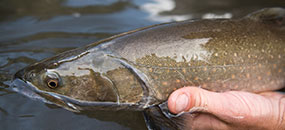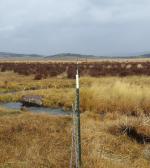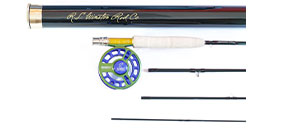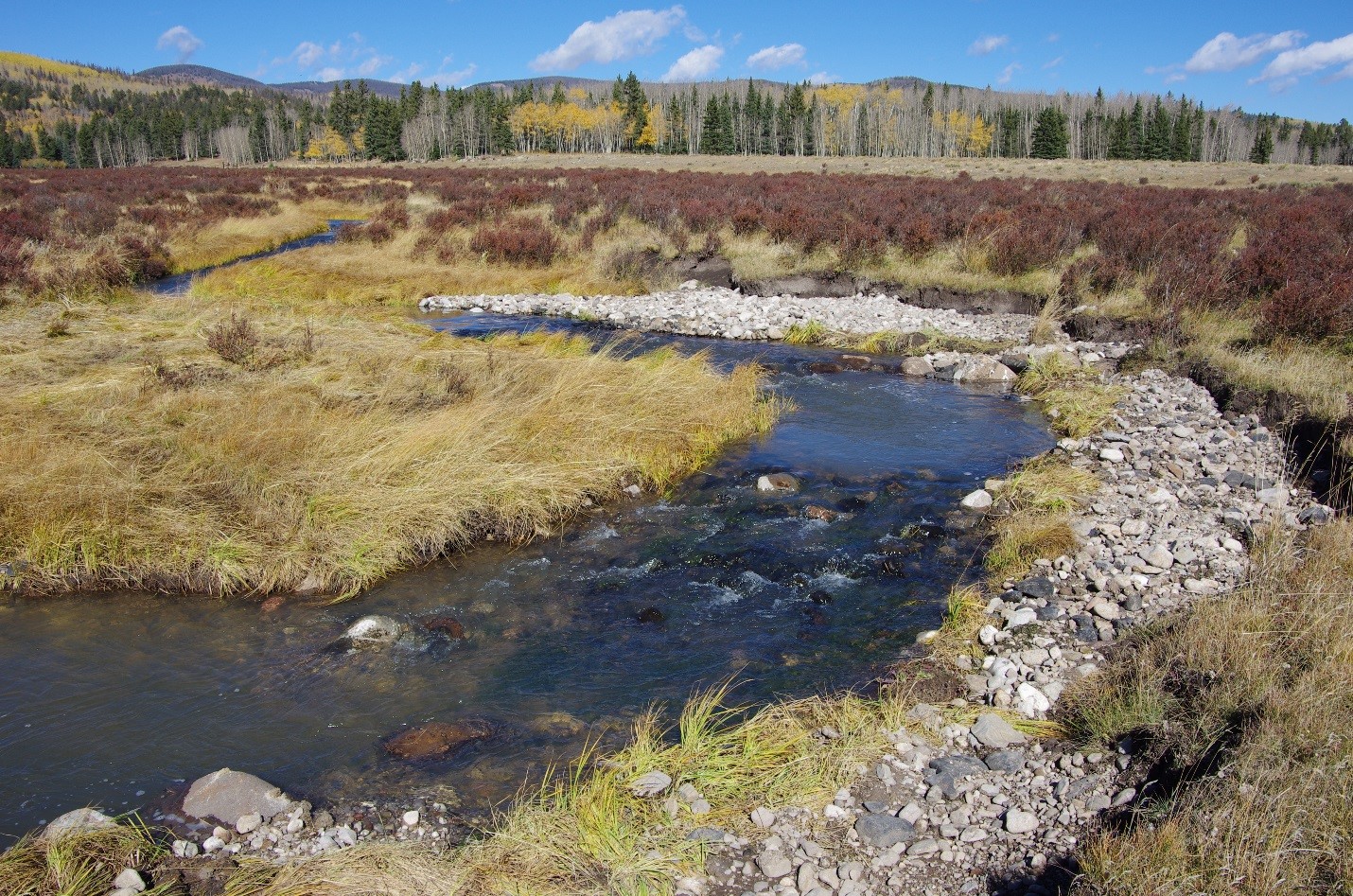This fence line photo clearly shows the benefits of the riparian fence from only one growing season.
by Kevin Terry
In 2014, Trout Unlimited and Conejos County, with funding from Great Outdoors Colorado (GOCO), embarked on an ambitious project to protect 3.5 miles of Jim Creek, which is home to a conservation population of native Rio Grande cutthroat trout. This first phase of the project involved installing and repairing fencing to keep cattle out of the stream and rest a long-overgrazed section of state land. It also catapulted a long-term stewardship program undertaken by TU’s San Luis Valley Chapter to help the State Land Board and grazing lessees maintain fences in a very remote watershed.
In 2017, Trout Unlimited’ s Western Water and Habitat Program received grant funding ($40,000) for stream restoration on the protected parcel from the San Luis Valley Conservation and Connection Initiative (LOR Foundation), thanks in large part to $7,500 in-cash match put forth by Colorado Trout Unlimited with funds raised by the Rocky Mountain Flyathlon. The project, completed in October 2017, restored fish habitat on a half-mile of Jim Creek using on-site materials and innovative techniques to reestablish a healthy functioning stream channel and quality fish habitat.
TU pursued the project to address decades of overgrazing that had created an over-wide channel with denuded banks susceptible to erosion and braiding caused by cattle trailing and bank trampling. As the stream widened, it lost the energy required to build and maintain pools, resulting in long sections of very shallow water essentially devoid of pool habitat. In addition, there were sections with cut bank erosion cutting off water supplies for riparian vegetation like sedges that stabilize banks with complex root masses.
The project restored proper stream function by repurposing on-site materials to narrow the channel and re-establish a single thread stream with a healthy pool to riffle ratio providing key habitat structures that offer cover and refuge in low flows. The restoration work was completed in October 2017, establishing 45 new pools and adding another 40-plus structures to stabilize banks and narrow the stream channel. The narrower channel will concentrate stream flows, creating the energy required to maintain pool scour and quality riffle habitat.
While Phase 1 of the Jim Creek restoration project is now complete, TU’s work to protect and restore this beautiful mountain stream is far from done. In June of 2018, volunteers from the San Luis Valley Chapter of Trout Unlimited, in collaboration with Running Rivers and the Rocky Mountain Flyathlon, will head to Jim Creek to plant wetland and riparian vegetation on the newly established banks. The team will also repair and maintain the riparian fence and clean up old fencing materials hazardous to wildlife.
Additionally, planning for Phase 2 of the restoration work is under way and TU’s Kevin Terry and partners plan to design and implement another half-mile of restoration work in fall 2018. TU is also working with the U.S. Fish and Wildlife Service and the upstream landowner and partner, the U.S. Forest Service, to replace an existing undersized culvert that is currently a seasonal barrier and a significant detriment to water quality.
This project never would have happened without funding from the LOR Foundation through the San Luis Valley Conservation and Connection Initiative, GOCO’s Riparian Restoration Grants, and Colorado Trout Unlimited with funding raised through the Rocky Mountain Flyathlon. A huge thanks also goes out to State Land Board for being an active and willing partner and adaptive landlord for our state lands.
Before: Eroded cut-bank lacking a water table connection for riparian plants to establish roots and stabilize the bank.
After: Stabilized bank with new floodplain bench and transplanted sedges to stabilize the bank and maintain pools.
Kevin Terry is TU project coordinator in Colorado's San Luis Valley.








